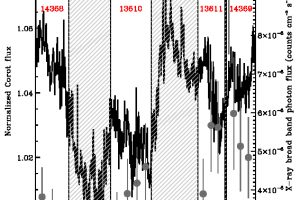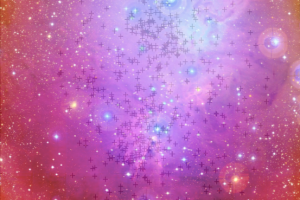Variability and magnetic activity in pre-Main Sequence stars. The study: “CSI2264: Simultaneous optical and X-ray variability in the pre-main sequence stars of NGC2264. II: Photometric variability, magnetic activity, and rotation in class III objects and stars with transition disks” of M. G. Guarcello (INAF-OAPA) recently appeared in A&A

Pre-Main Sequence stars are young stars whose cores are not dense and hot enough to ignite the thermonuclear reactions that will power them for the rest of their evolution. These stars are sorted in three classes: the youngest stars are the class I sources, still embedded in an accreting envelope of gas; class II stars have dispersed their accreting envelope
» Read more

